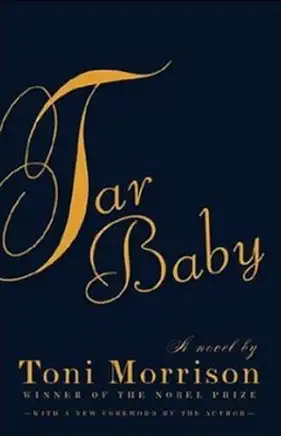
In 1983, Toni Morrison explained in an interview with Tom LeClair that a tar baby was a Black woman who held things together. Merriam Webster defines a tar baby as something from which it is nearly impossible to extricate oneself. It also notes that it is sometimes offensive. It is definitely offensive when used to refer to a Black person.
As in most good literature, the title Tar Baby is multilayered and significant for many reasons. Some view Ondine, the Black cook for the Street family, as the tar baby since she held two families and a household together: the Street family, consisting of Valerian, his wife Margaret, and their son Michael, and Ondine, her husband Sidney, and their niece Jadine. Others believe that Son, the intruder who becomes Jadine’s lover, was the tar baby of the title. Still, others thought Jadine, who seemed figuratively stuck in tar, educated by a white man, and alienated from her culture, was the title’s tar baby. One might also use “tar baby” to describe how “stuck” some characters are in their social classes or societal roles.
The setting for the novel is primarily the fictitious Caribbean Isle des Chevaliers (Island of Horsemen) in the 1970s, where there is a noticeable caste system. The obvious class divisions are between Blacks and Whites, especially since the White Street family employs Black servants. But the more subtle class systems are those within Black and White cultures. Morrison explores race, class, and family structures in an engaging story that delves into male/female roles and the value of education.
Stereotypes and prejudices run rampant in the text. The plight of Blacks in the United States and on the island provides many plot points in this carefully constructed story. Significantly, some Black characters are addressed by their functions or nicknames rather than their names. Since Jadine, the educated Black protagonist, uses this terminology, her traitorous nature is exposed. It is also essential to consider the upbringing and self-improvement efforts of the characters as Morrison introduces us to people in New York City and Florida. While reading about intelligence and its relationship to “street smarts,” one wonders which is most beneficial to survival in different circumstances.
Other themes and concepts included in the novel and worth pondering are the acceptance of sexual assault by some characters and the role of beauty and betrayal in relationships. The images of worldliness and lowliness being perceived differently among the main characters are thought-provoking. This work is probably one of the lesser-known of Toni Morrison’s. It is truly worth reading and reflecting on some of the timeless topics.


